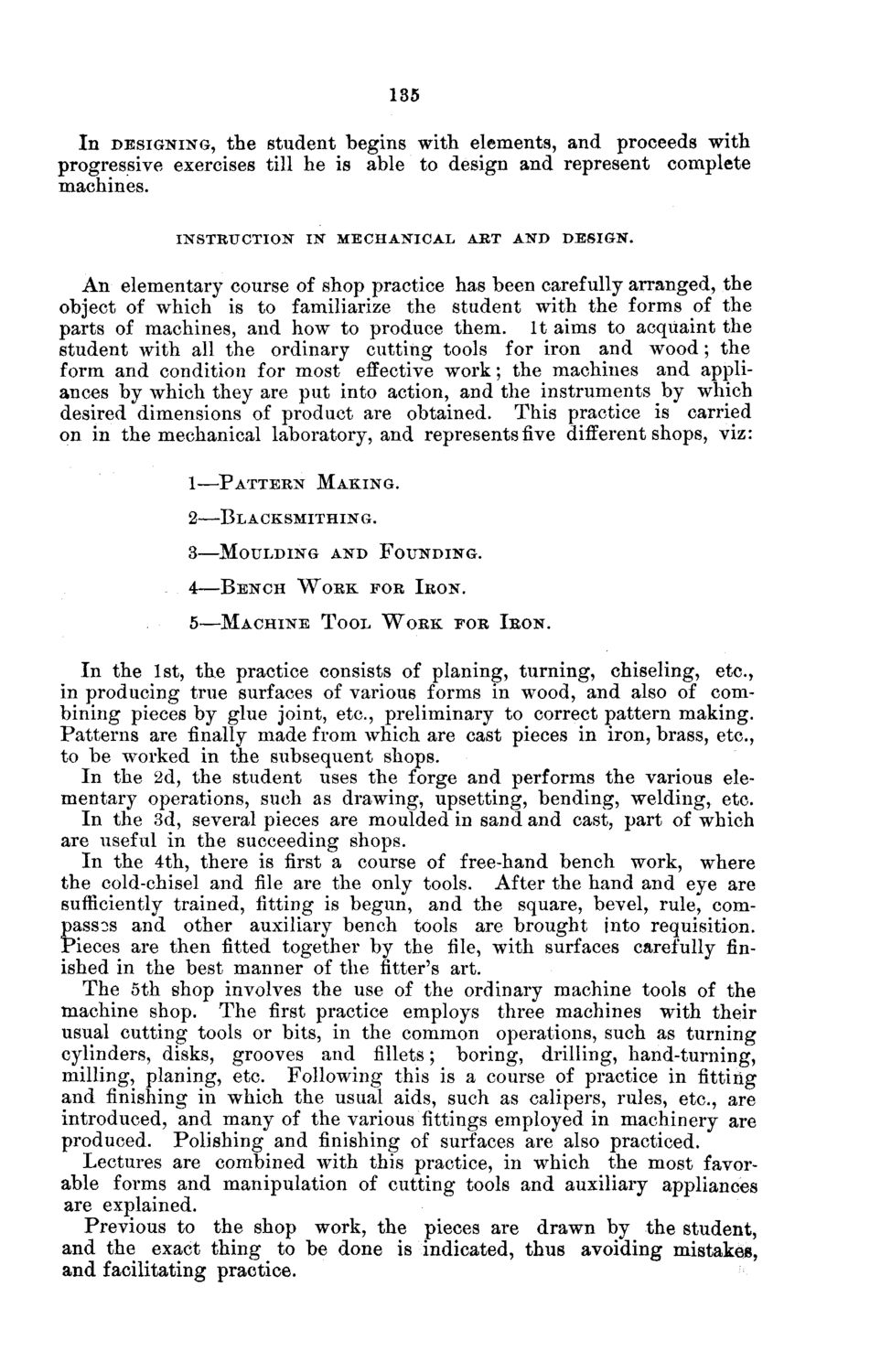| |
| |
Caption: Board of Trustees Minutes - 1878
This is a reduced-resolution page image for fast online browsing.

EXTRACTED TEXT FROM PAGE:
135 In DESIGNING, the student begins with elements, and proceeds with progressive exercises till he is able to design and represent complete machines. INSTRUCTION I N MECHANICAL ART AND DESIGN. An elementary course of shop practice has been carefully arranged, the object of which is to familiarize the student with the forms of the parts of machines, and how to produce them. It aims to acquaint the student with all the ordinary cutting tools for iron and w o o d ; the form and condition for most effective w o r k ; the machines and appliances by which they are put into action, and the instruments by which desired dimensions of product are obtained. This practice is carried on in the mechanical laboratory, and represents five different shops, viz: 1—PATTERN MAKING. 2—BLACKSMITHING. 3 — M O U L D I N G AND F O U N D I N G . 4 — B E N C H W O R K FOR I R O N . 5 — M A C H I N E T O O L W O R K FOR I R O N . In the 1st, the practice consists of planing, turning, chiseling, etc., in producing true surfaces of various forms in wood, and also of combining pieces by glue joint, etc., preliminary to correct pattern making. Patterns are finally made from which are cast pieces in iron, brass, etc., to be worked in the subsequent shops. In the 2d, the student uses the forge and performs the various elementary operations, such as drawing, upsetting, bending, welding, etc. In the 3d, several pieces are moulded in sand and cast, part of which are useful in the succeeding shops. In the 4th, there is first a course of free-hand bench work, where the cold-chisel and file are the only tools. After the hand and eye are sufficiently trained, fitting is begun, and the square, bevel, rule, compasses and other auxiliary bench tools are brought into requisition. Pieces are then fitted together by the file, with surfaces carefully finished in the best manner of the fitter's art. The 5th shop involves the use of the ordinary machine tools of the machine shop. The first practice employs three machines with their usual cutting tools or bits, in the common operations, such as turning cylinders, disks, grooves and fillets; boring, drilling, hand-turning, milling, planing, etc. Following this is a course of practice in fitting and finishing in which the usual aids, such as calipers, rules, etc., are introduced, and many of the various fittings employed in machinery are produced. Polishing and finishing of surfaces are also practiced. Lectures are combined with this practice, in which the most favorable forms and manipulation of cutting tools and auxiliary appliances are explained. Previous to the shop work, the pieces are drawn by the student, and the exact thing to be done is indicated, thus avoiding mistaken, and facilitating practice.
| |